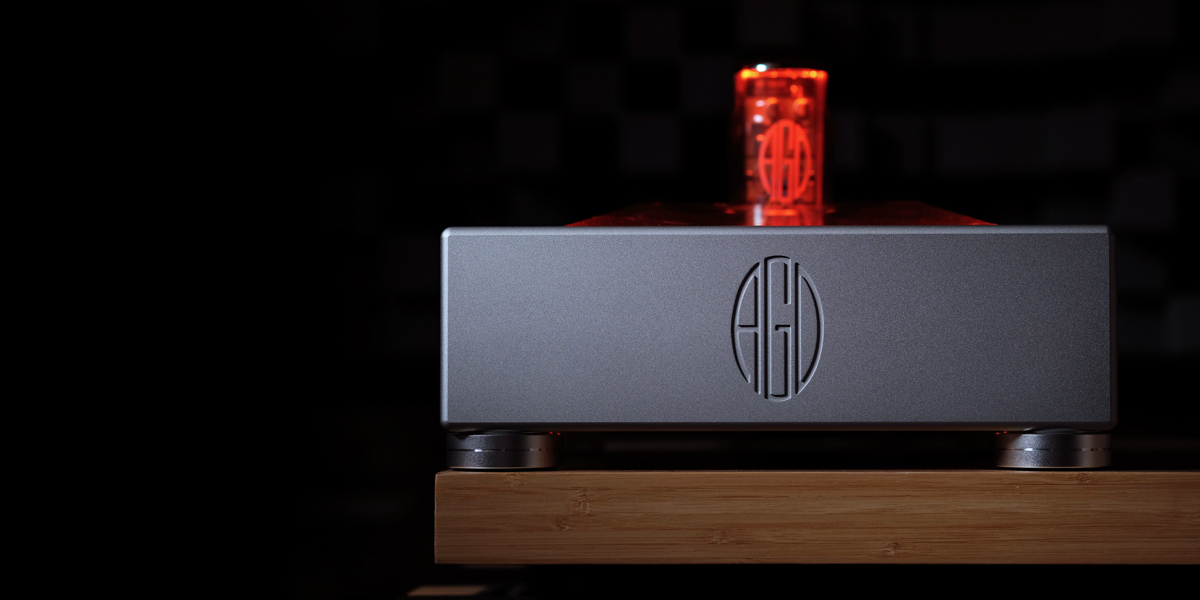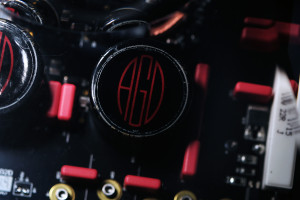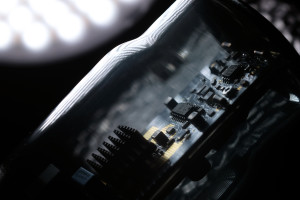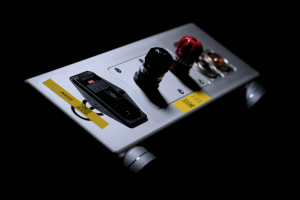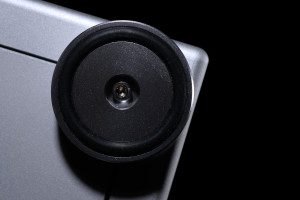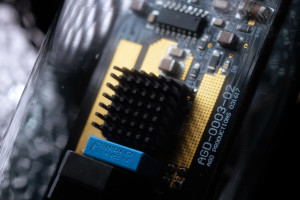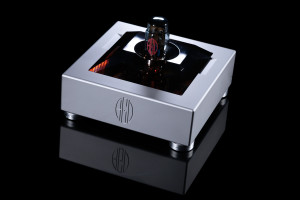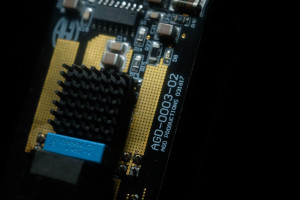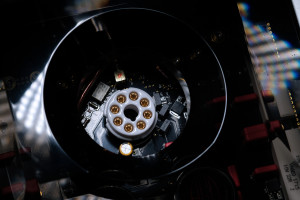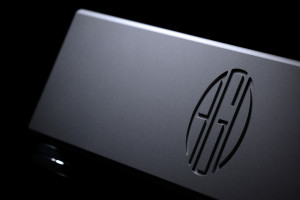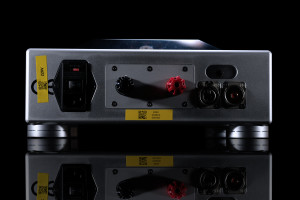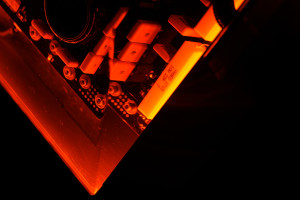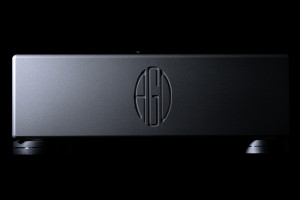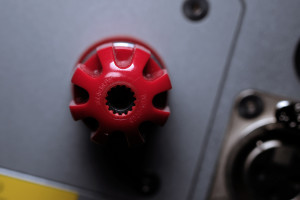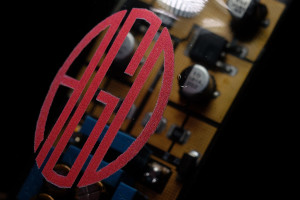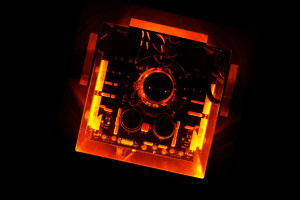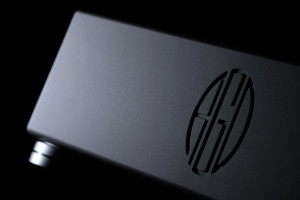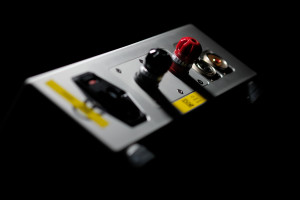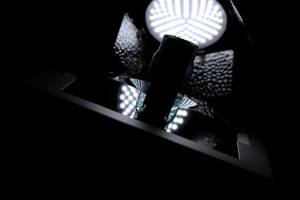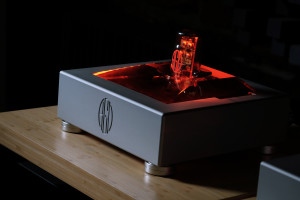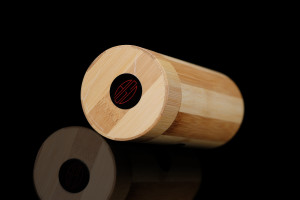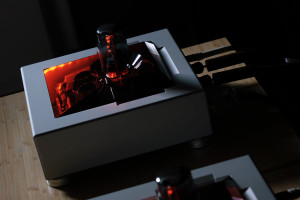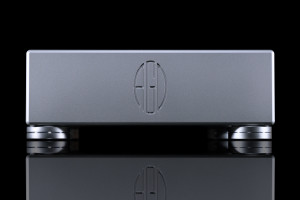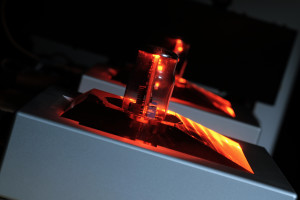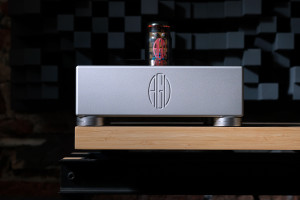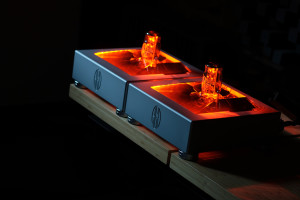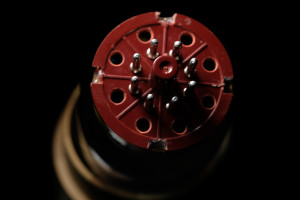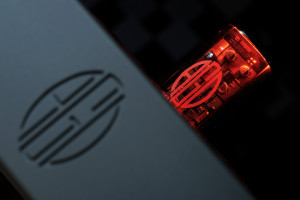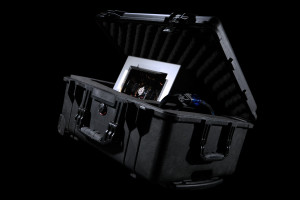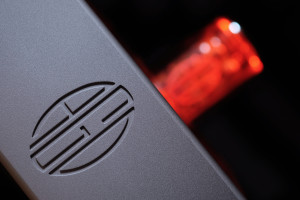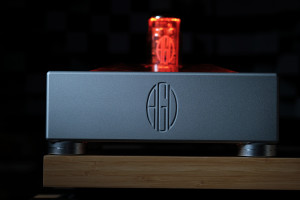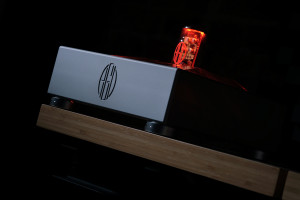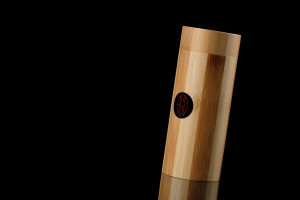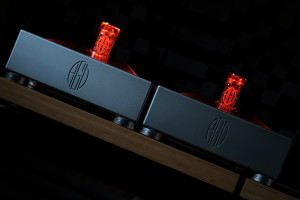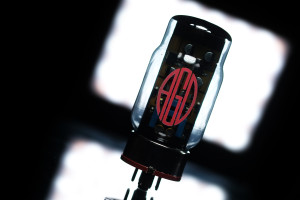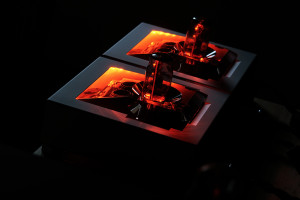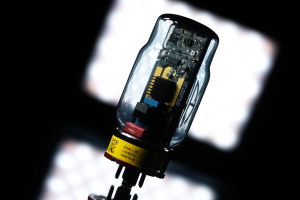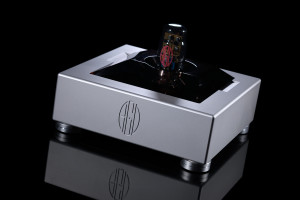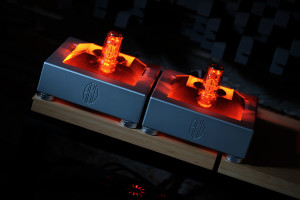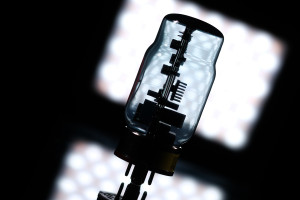Is class D still not any intriguing to you? Even if it incorporates tubes, fully modular output stage, and runs on GaN Mosfets instead of the usual silicon suspects? OK, so you wouldn’t believe in existence of such a machine? Then please allow me to introduce you to AGD Productions Vivace mono amps with all that included. Enjoy!
Introduction
When I started my audio adventure more than a decade ago, neither was file playback considered as kosher, nor were class D amps. Although these were convenient mainstream routes outside of audiophiles’ scopes, significant advancements were made on both counts since then and here we are today, with access to a far broader range of quality hardware than ever before. Switching amplifiers were designed for efficiency, small footprint, stout power and affordable price in the first place. Still, over the years this topology got good enough for many audio houses to incorporate it in their own audiophile designs. OEM modules by i.e. Hypex, ICEpower or Pascal are beating hearts inside of products by Kii Audio, Grimm Audio, Jeff Rowland or Aavik to name just several, and there are many more. However, this report’s very interesting AGD Productions company, introduced to me through Srajan’s work as it oftentimes happens, is not alike.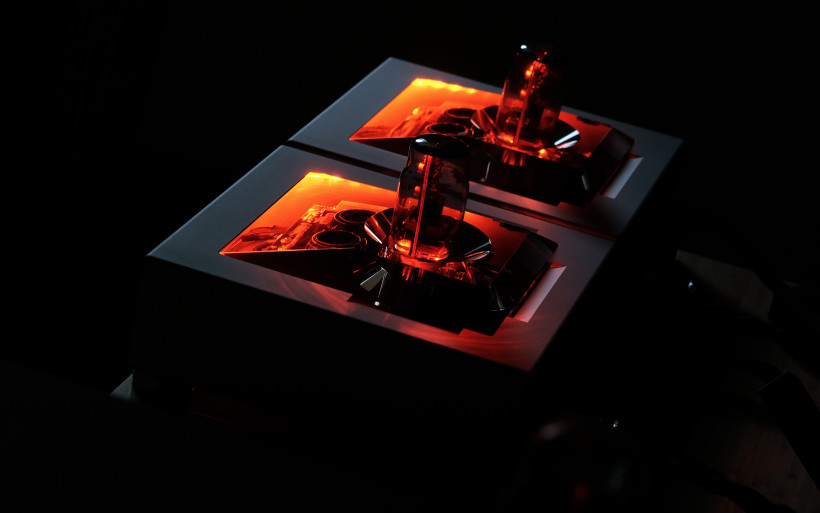 AGD Productions was established in April 2015 in Los Angeles. It also pursues class D circuitry, but does so on its own highly unique terms, as far away from OEM work as it gets. To know why, one quick glimpse at its founder’s CV explains a lot. Alberto Guerra was born in Italy and has moved to the USA 23 years ago. His engineering career started in the 80s. For more than two decades he proudly worked at International Rectifier (a company worldwide famous for power electronics, i.e. HexFET, and acquired by Infineon in 2015) on new semiconductor types, at Vishay on integrated circuits, and at Semtech where he reshaped this company’s marketing strategy, but the list doesn’t end here. The man has a degree in Nuclear Engineering and owns 10 patents; six for packaging technology, two for novel power module topology plus two for GaN power Mosfets and ICs. He worked on broad power applications; from electric grid level, down to what portable and IoT hardware runs on. Needless to say, this heavyweight background labels Alberto as an engineer of hardcore experience with power semiconductors. Audio is his passion, however the way how he approached it is unlike anything else I’ve seen, and most likely you haven’t either.
AGD Productions was established in April 2015 in Los Angeles. It also pursues class D circuitry, but does so on its own highly unique terms, as far away from OEM work as it gets. To know why, one quick glimpse at its founder’s CV explains a lot. Alberto Guerra was born in Italy and has moved to the USA 23 years ago. His engineering career started in the 80s. For more than two decades he proudly worked at International Rectifier (a company worldwide famous for power electronics, i.e. HexFET, and acquired by Infineon in 2015) on new semiconductor types, at Vishay on integrated circuits, and at Semtech where he reshaped this company’s marketing strategy, but the list doesn’t end here. The man has a degree in Nuclear Engineering and owns 10 patents; six for packaging technology, two for novel power module topology plus two for GaN power Mosfets and ICs. He worked on broad power applications; from electric grid level, down to what portable and IoT hardware runs on. Needless to say, this heavyweight background labels Alberto as an engineer of hardcore experience with power semiconductors. Audio is his passion, however the way how he approached it is unlike anything else I’ve seen, and most likely you haven’t either.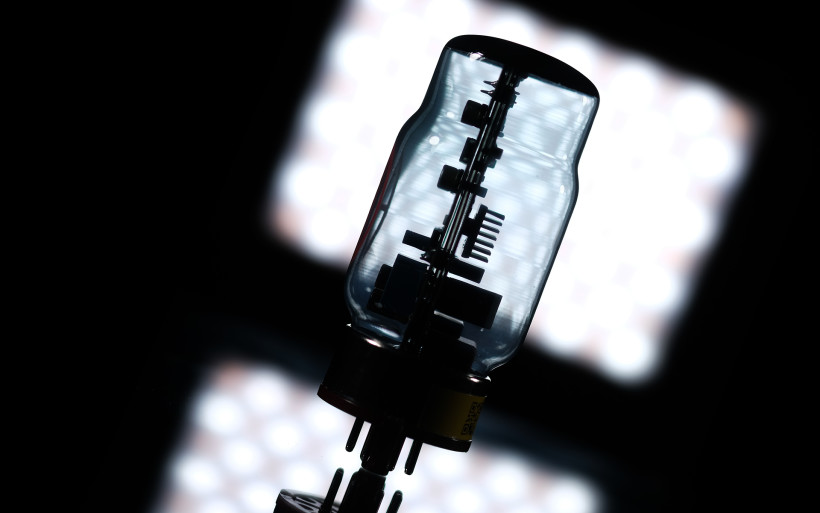 The AGD Productions’ CEO based his work on class D circuits for reasons beyond beefy power dressed in a tiny package. Although sonic performance, accuracy, and desire to send into oblivion several stereotypes attached to this topology were his primary goals, Alberto’s career path also unlocked the option to exploit gallium-nitride transistors, aka GaNs, instead of silicon counterparts. The former component type was tailored for switching and not linear circuits, which explains why class D was the natural choice. But more interestingly, the man played a key role within the team which designed these power devices for audio applications years before their commercial emergence, hence he knew well how to implement them and reap all associated benefits. To simplify, as very low-charge products capable of rapidly switching significant voltages at MHz levels, GaNs used as class D output devices are substantially faster versus regular Mosfets, free from oscillations even at very high slew rates, and they sport higher bandwidth. There’s a small group of manufacturers who either intend to, or already had transitioned from silicon to gallium-nitride transistors, but this review’s product is my first of this still very rare sort. GaNs used in AGD Productions’ machines not only are proprietary designs developed exclusively for audio applications, but I was also told that they’re unobtainable components. Alberto owns the whole stock, just as Nelson Pass is the source of SITs.
The AGD Productions’ CEO based his work on class D circuits for reasons beyond beefy power dressed in a tiny package. Although sonic performance, accuracy, and desire to send into oblivion several stereotypes attached to this topology were his primary goals, Alberto’s career path also unlocked the option to exploit gallium-nitride transistors, aka GaNs, instead of silicon counterparts. The former component type was tailored for switching and not linear circuits, which explains why class D was the natural choice. But more interestingly, the man played a key role within the team which designed these power devices for audio applications years before their commercial emergence, hence he knew well how to implement them and reap all associated benefits. To simplify, as very low-charge products capable of rapidly switching significant voltages at MHz levels, GaNs used as class D output devices are substantially faster versus regular Mosfets, free from oscillations even at very high slew rates, and they sport higher bandwidth. There’s a small group of manufacturers who either intend to, or already had transitioned from silicon to gallium-nitride transistors, but this review’s product is my first of this still very rare sort. GaNs used in AGD Productions’ machines not only are proprietary designs developed exclusively for audio applications, but I was also told that they’re unobtainable components. Alberto owns the whole stock, just as Nelson Pass is the source of SITs.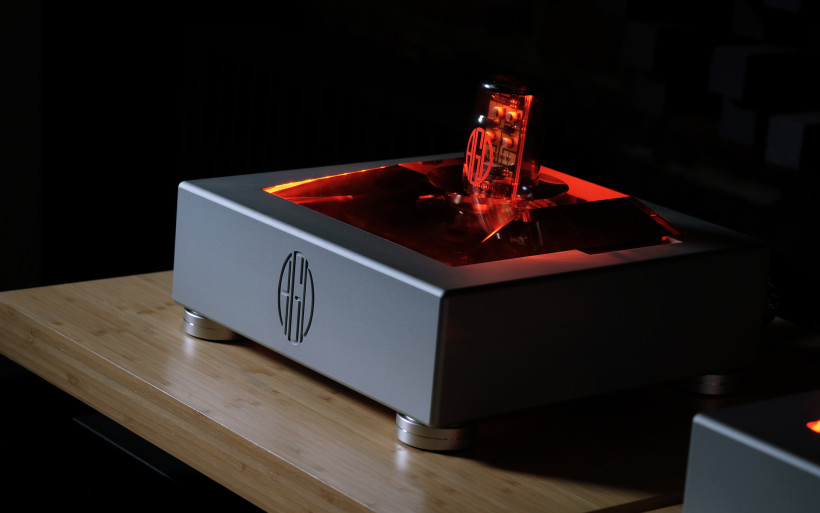 Alberto showcased the first product under the AGD Productions banner at T.H.E. Show in 2018. Back then his Vivace monaural amps were on duty with Ocean Way Audio speakers by Allen Sides, a veteran recording engineer with five Grammies and about 400 Platinum discs under his belt. How the two gents met and decided to exhibit together is quite the story, told in detail by Alberto himself in this highly entertaining video. All devices in his current portfolio – Audion and Vivace monos plus Andante pre/DAC/streamer combo – were already extensively covered by Srajan here and here. Since firsties were off the table and the Italian CEO didn’t suggest anything specific either, I could freely pick my first AGD Productions assignment. The idea of starting with his first commercially available model seemed fitting, which eventually resulted in this material.
Alberto showcased the first product under the AGD Productions banner at T.H.E. Show in 2018. Back then his Vivace monaural amps were on duty with Ocean Way Audio speakers by Allen Sides, a veteran recording engineer with five Grammies and about 400 Platinum discs under his belt. How the two gents met and decided to exhibit together is quite the story, told in detail by Alberto himself in this highly entertaining video. All devices in his current portfolio – Audion and Vivace monos plus Andante pre/DAC/streamer combo – were already extensively covered by Srajan here and here. Since firsties were off the table and the Italian CEO didn’t suggest anything specific either, I could freely pick my first AGD Productions assignment. The idea of starting with his first commercially available model seemed fitting, which eventually resulted in this material.
Build
Although cardboards are the usual sight even well beyond today’s ask, Alberto went the extra mile with two original 1560 Pelican cases, sold for roughly €200 a pop. Not only these watertight, crushproof, and dustproof boxes were easy to carry around, their build quality is solid enough to withstand pretty much everything. Foam inside each was precisely cut to accommodate one mono amp, quality power cord, manual and a small cylindrical bamboo box, which stored the Italian’s patented GaNTube™ module. I have to admit that this rugged packaging scheme plus nicely organized inside, were quite the luxurious opener already.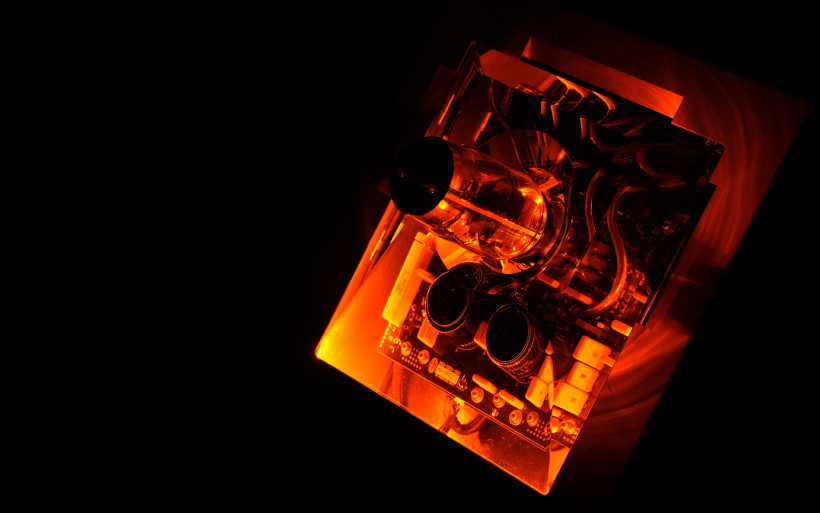 A cool $15’000 spent on AGD Productions Vivace buys you two mono amps, each of 10kg mass and (W x D x H) 279 x 279 x 127mm measurements, which imply compact and easily manageable squared boxes. Each slightly rounded enclosure is milled from a sandblasted solid aluminium block, and it sports four footers with rubber ring washers underneath. Each mono features a nicely cut AGD logo on the front, whereas its rear houses two inputs (RCA and XLR) on the left, their selector knob sits a bit higher up, a pair of quality WBT speaker terminals are fixed in the middle, and an IEC inlet with a (115/230V) global voltage card built in locates on the far right end.
A cool $15’000 spent on AGD Productions Vivace buys you two mono amps, each of 10kg mass and (W x D x H) 279 x 279 x 127mm measurements, which imply compact and easily manageable squared boxes. Each slightly rounded enclosure is milled from a sandblasted solid aluminium block, and it sports four footers with rubber ring washers underneath. Each mono features a nicely cut AGD logo on the front, whereas its rear houses two inputs (RCA and XLR) on the left, their selector knob sits a bit higher up, a pair of quality WBT speaker terminals are fixed in the middle, and an IEC inlet with a (115/230V) global voltage card built in locates on the far right end.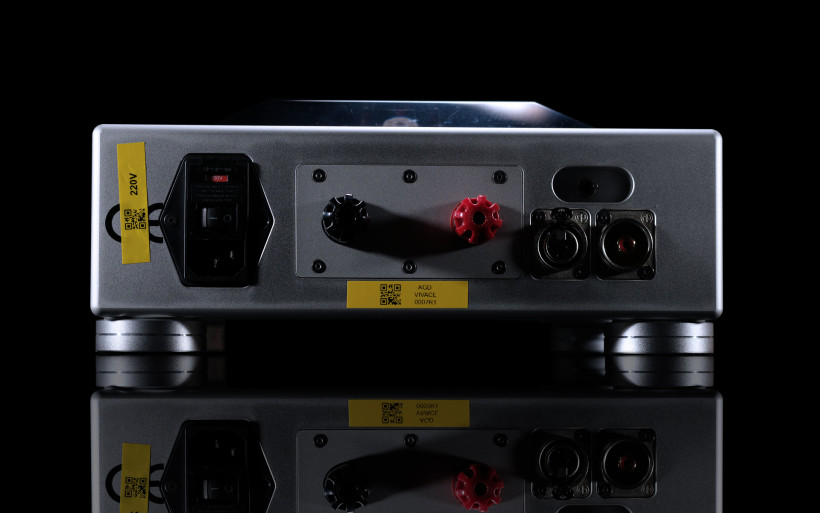 The product’s specs list nominal and maximum power output of respectivley 100W into 8Ω at 0.01% THD+N (20Hz÷20KHz), and 200W into 4Ω at 0.1% THD+N (1KHz). THD+N at 10W/1KHz is <0.005%, bandwidth (+/-3dB) is 5Hz-100kHz, and efficiency is >94%. Output Noise (A-weighted) of ≤ 45μV, 120dB of dynamic range plus PWM frequency up to 768kHz seal the deal. Yes, class D and no less, but Vivace’s top is what truly tells that this is no ordinary affair. Today we’re as far from the usual as possible.
The product’s specs list nominal and maximum power output of respectivley 100W into 8Ω at 0.01% THD+N (20Hz÷20KHz), and 200W into 4Ω at 0.1% THD+N (1KHz). THD+N at 10W/1KHz is <0.005%, bandwidth (+/-3dB) is 5Hz-100kHz, and efficiency is >94%. Output Noise (A-weighted) of ≤ 45μV, 120dB of dynamic range plus PWM frequency up to 768kHz seal the deal. Yes, class D and no less, but Vivace’s top is what truly tells that this is no ordinary affair. Today we’re as far from the usual as possible.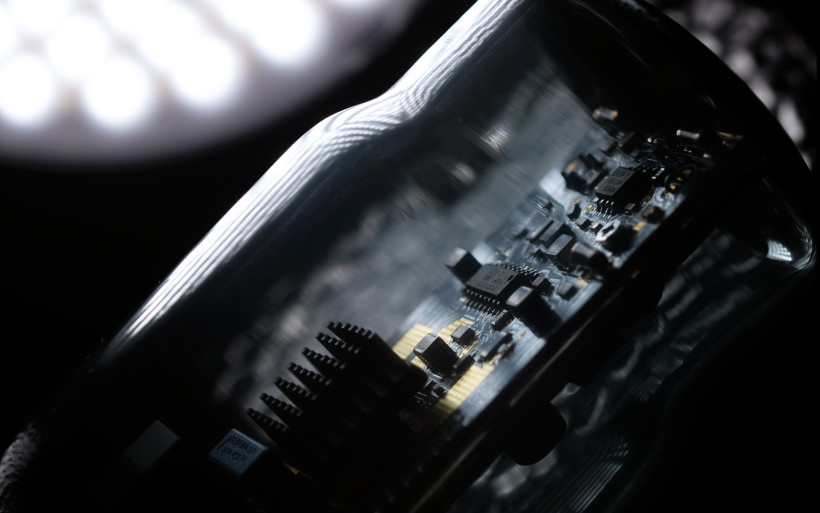 Where vast majority of amps would feature plain bonnets with several venting openings at most, Vivace sports an intriguing truncated pyramidal dome, purposely made out of smoked translucent acrylic. Its flat surfaces slightly magnify and distort internals visible below, whereas discrete orange LED strips make the view this much more interesting. The effect is truly fabulous, which hopefully photos in this material show. Although this glow can’t be defeated, it’s barely visible and unobtrusive from the listening position, so not a con. At least not to this reporter’s sensitive eyes. It’s also worth knowing that this lighting all over the place on some shots is the fully intentional artistic effect.
Where vast majority of amps would feature plain bonnets with several venting openings at most, Vivace sports an intriguing truncated pyramidal dome, purposely made out of smoked translucent acrylic. Its flat surfaces slightly magnify and distort internals visible below, whereas discrete orange LED strips make the view this much more interesting. The effect is truly fabulous, which hopefully photos in this material show. Although this glow can’t be defeated, it’s barely visible and unobtrusive from the listening position, so not a con. At least not to this reporter’s sensitive eyes. It’s also worth knowing that this lighting all over the place on some shots is the fully intentional artistic effect.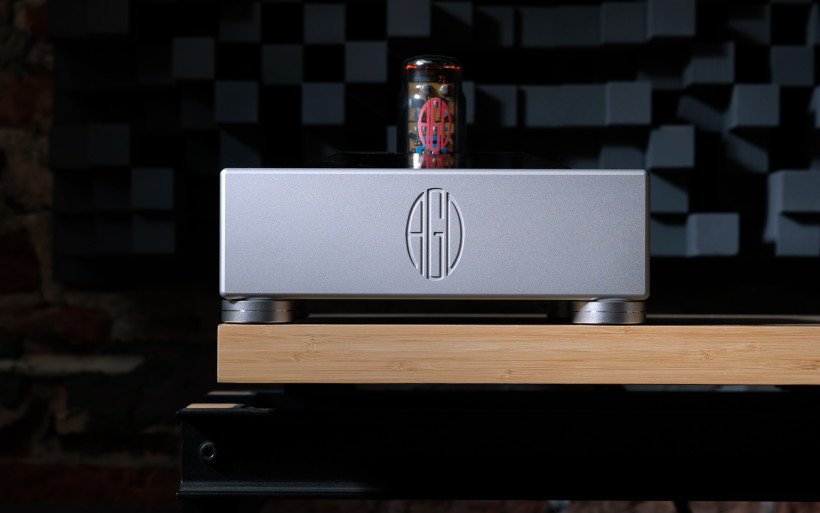 Each mono’s acrylic top sports a generously wide opening with a regular 8-pin valve socket, however it doesn’t accommodate regular tubes, and here’s where Alberto’s very own GaNTube™ modules step in. Once released from their bamboo compartments, they resemble regular KT88 specimens at first glance. However, the man used KT88’s glass housing and base to fit his complete transistor output stage inside. This small board features caps, LEDs, ICs, and the key GaN module just under a black radiator, but not vacuum. GaNTube™ devices don’t need it, whereas their drilled bases actually improve air circulation. Can you see the angry mob armed with torches and pitchforks from afar? Can you hear all the accusations of sorcery, witchcraft and blasphemy against the valve kind? Can you smell the stake already burning? I can’t say whether Alberto did. But even if so, as a clever engineer he undoubtedly is, he must’ve had a time of his life in his fortress from the future. What might’ve followed next is fairly easy to predict, the Italian word ‘guerra’ translates to ‘war’ after all. Just sayin’
Each mono’s acrylic top sports a generously wide opening with a regular 8-pin valve socket, however it doesn’t accommodate regular tubes, and here’s where Alberto’s very own GaNTube™ modules step in. Once released from their bamboo compartments, they resemble regular KT88 specimens at first glance. However, the man used KT88’s glass housing and base to fit his complete transistor output stage inside. This small board features caps, LEDs, ICs, and the key GaN module just under a black radiator, but not vacuum. GaNTube™ devices don’t need it, whereas their drilled bases actually improve air circulation. Can you see the angry mob armed with torches and pitchforks from afar? Can you hear all the accusations of sorcery, witchcraft and blasphemy against the valve kind? Can you smell the stake already burning? I can’t say whether Alberto did. But even if so, as a clever engineer he undoubtedly is, he must’ve had a time of his life in his fortress from the future. What might’ve followed next is fairly easy to predict, the Italian word ‘guerra’ translates to ‘war’ after all. Just sayin’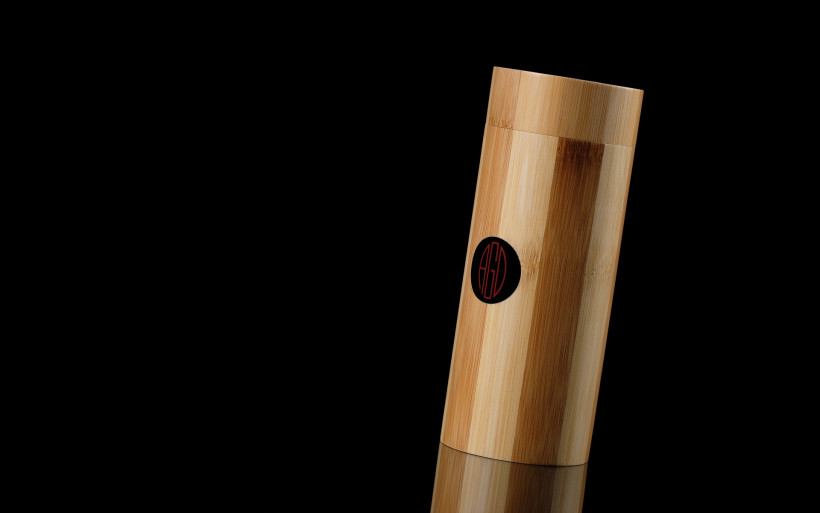 There were several reasons why Alberto saw a glass enclosure as perfect for his GaN circuit. As an Italian, he has a soft spot for visual flair. That’s why, instead of pursuing yet another regularly shaped and sized aluminium box, he leaned towards gently rounded Art Deco styling and squared footprint. His design put inside of a common enclosure simply wouldn’t look serious enough for what it truly is. Nicely lit acrylic top prevents that and significantly boosts visual score, whereas a tube right in the middle ups the ante on seriousness even more so. But all this aside, AGD’s own take on replaceable valves also adds useful modularity to the list. My loaner arrived with a set of two KT88 GaNTubes, but a more powerful KT150 GaN bulb is already finished, and it’s likely that more types we’ll see in the future. But most interestingly, just as it’s possible to swap tubes in their regular hardware, today’s unlocks the option to roll solid-state output stages in a transistor type product, which is crazy. In this specific context, the fact of GaNs incorporated inside of a vacuum-free glass shell I’ve found quite funny.
There were several reasons why Alberto saw a glass enclosure as perfect for his GaN circuit. As an Italian, he has a soft spot for visual flair. That’s why, instead of pursuing yet another regularly shaped and sized aluminium box, he leaned towards gently rounded Art Deco styling and squared footprint. His design put inside of a common enclosure simply wouldn’t look serious enough for what it truly is. Nicely lit acrylic top prevents that and significantly boosts visual score, whereas a tube right in the middle ups the ante on seriousness even more so. But all this aside, AGD’s own take on replaceable valves also adds useful modularity to the list. My loaner arrived with a set of two KT88 GaNTubes, but a more powerful KT150 GaN bulb is already finished, and it’s likely that more types we’ll see in the future. But most interestingly, just as it’s possible to swap tubes in their regular hardware, today’s unlocks the option to roll solid-state output stages in a transistor type product, which is crazy. In this specific context, the fact of GaNs incorporated inside of a vacuum-free glass shell I’ve found quite funny.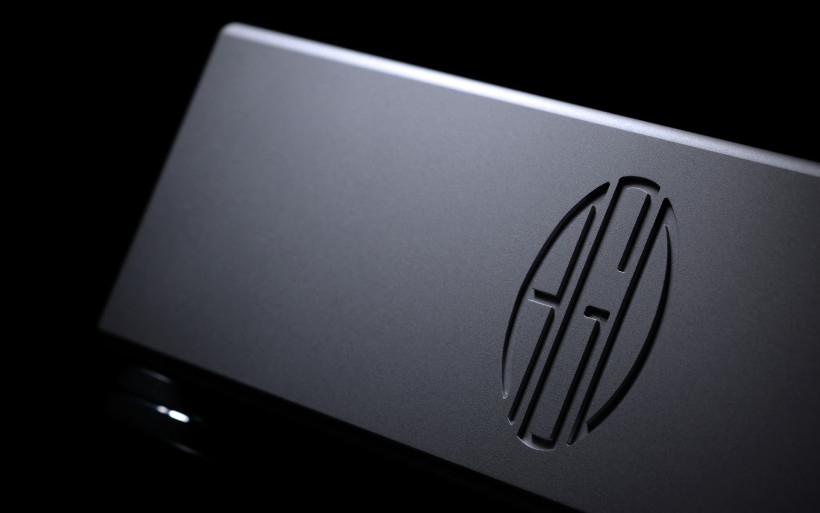 This report’s loaner would have to undergo a voltage bus adjustment at the AGD HQ to accommodate Alberto’s freshly minted KT150, and become Vivace Plus in the process. But that’s still the route far superior over spending cash on a more powerful amp, and facing all associated downsides. It also goes without saying that neither GaNTubes are fit to work in regular amps, nor can classic valves be used in AGD’s products.
This report’s loaner would have to undergo a voltage bus adjustment at the AGD HQ to accommodate Alberto’s freshly minted KT150, and become Vivace Plus in the process. But that’s still the route far superior over spending cash on a more powerful amp, and facing all associated downsides. It also goes without saying that neither GaNTubes are fit to work in regular amps, nor can classic valves be used in AGD’s products.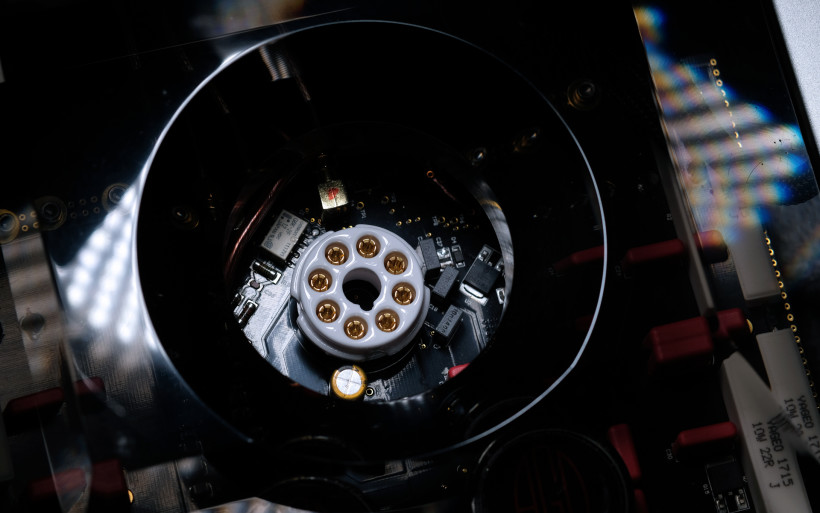 Upon asking Alberto about contents just under that radiator in his KT88, he explained that it’s a dual depletion-mode GaN micro Mosfet module of low I/O capacitance, set in the cascade configuration as a half-bridge for the shortest connection between switches as possible. It operates at 768kHz PWM at most, whereas the 400-500kHz range is its sweet spot. I was told that this frequency is determined by a power stage’s own switching, and the transfer between both has to be executed perfectly, namely without spikes or/and delays, which lead to distortion. This informs us that not one its specific part but the whole circuit has to be optimized; internal PSU, PWM block responsible for voltage/current conversion, and the glass output stage itself. Alberto explained that, if pushed higher on PWM, his design would net diminishing returns and temperature increase.
Upon asking Alberto about contents just under that radiator in his KT88, he explained that it’s a dual depletion-mode GaN micro Mosfet module of low I/O capacitance, set in the cascade configuration as a half-bridge for the shortest connection between switches as possible. It operates at 768kHz PWM at most, whereas the 400-500kHz range is its sweet spot. I was told that this frequency is determined by a power stage’s own switching, and the transfer between both has to be executed perfectly, namely without spikes or/and delays, which lead to distortion. This informs us that not one its specific part but the whole circuit has to be optimized; internal PSU, PWM block responsible for voltage/current conversion, and the glass output stage itself. Alberto explained that, if pushed higher on PWM, his design would net diminishing returns and temperature increase.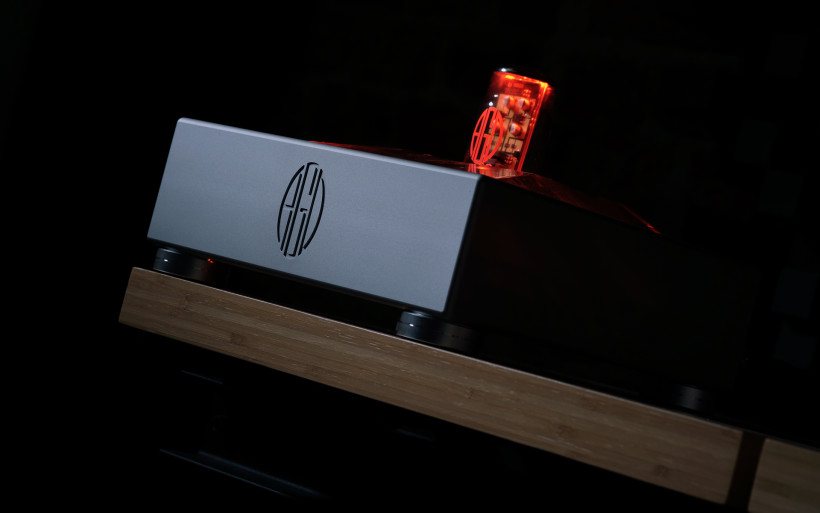 Vivace is inherently symmetrical and its two inputs operate independently. Both can be fed with signal at the same time, but there’s no interference between them, due to the XLR-RCA commutation executed at the output of the unity gain buffer stage. As far as overall put-togetherness goes, today’s scores very high and surely looks like a costly audio product. It also operates flawlessly, is instantly ready for action, runs pleasantly cool under stress and at high SPL, plus connected speakers are dead silent up close. All things considered, this report’s AGD leaves no room for complaints from the purely practical point of view. Although you might, I didn’t even miss the secondary on/off switch somewhere on Vivace’s front. If its ask is too steep for you, Alberto’s twice as easy on a wallet and far smaller Audion model isn’t too far off accordingly to Srajan, who’d heard and compared them both. Once and if the latter arrives, then I’ll have my own say on the matter, but that’s a story for another time. Vivace is here now, so it’s high time to hear what it can do.
Vivace is inherently symmetrical and its two inputs operate independently. Both can be fed with signal at the same time, but there’s no interference between them, due to the XLR-RCA commutation executed at the output of the unity gain buffer stage. As far as overall put-togetherness goes, today’s scores very high and surely looks like a costly audio product. It also operates flawlessly, is instantly ready for action, runs pleasantly cool under stress and at high SPL, plus connected speakers are dead silent up close. All things considered, this report’s AGD leaves no room for complaints from the purely practical point of view. Although you might, I didn’t even miss the secondary on/off switch somewhere on Vivace’s front. If its ask is too steep for you, Alberto’s twice as easy on a wallet and far smaller Audion model isn’t too far off accordingly to Srajan, who’d heard and compared them both. Once and if the latter arrives, then I’ll have my own say on the matter, but that’s a story for another time. Vivace is here now, so it’s high time to hear what it can do.
Sound
In order to review Vivace monos, fidata HFAS1-S10U handled storage and transport duties, then either a LampizatOr Pacific DAC (KR Audio T-100/Living Voice 300B + KR Audio 5U4G Ltd. Ed.) or AMR DP-777SE took over to pass the signal to a Thöress DFP line stage and then to today’s. Kinki Studio EX-M1 and Trilogy 925 were used as well. From there a Boenicke Audio S3 speaker cable stepped in to connect to Boenicke Audio W11SE+ floorstanders. All amps were powered by LessLoss C-MARCs from a GigaWatt PC-3 SE EVO+ power conditioner, fronted by the same manufacturer’s LC-3 EVO cable. Interconnects used were Boenicke Audio IC3 CG and Amber-modded Audiomica Laboratory Erys Excellence. The USB chain included the full iFi audio stack; a micro iUSB3.0, nano iGalvanic3.0, three Mercury USB cables in-between plus one 9V iPower.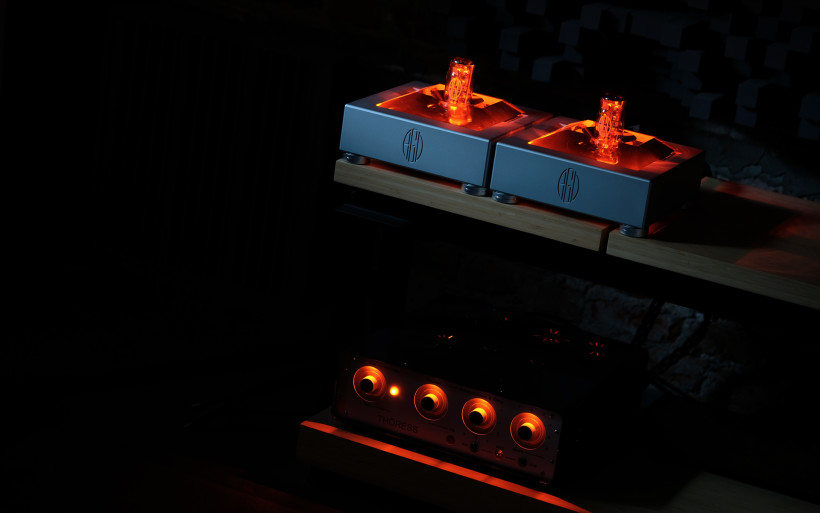 Just before Vivace’s arrival I knew that my platform had to undergo several adjustments. Neither my DAC nor line stage are balanced machines, hence not quite ideal. Alberto’s monos used only as single-ended devices wasn’t enough. Or was it? In order to know for sure, I had to involve a fully balanced DAC with a solid volume control built in, which labeled the AMR DP-777SE I’ve been using at home as ideal for the job. To get the first impression, I connected Vivace directly to the Brit’s regulated XLR outs. Then Thöress DFP was added in-between to see how both volume plots contributed and which one was more fitting. After that the Pacific replaced the AMR whilst a standalone line stage remained on duty. All these exercises were in order to find the best combination I possibly could assemble prior to going any further. Once that was sorted, Kinki Studio’s EX-M1 and Trilogy 925 were thrown in the same pit. Here’s what went down.
Just before Vivace’s arrival I knew that my platform had to undergo several adjustments. Neither my DAC nor line stage are balanced machines, hence not quite ideal. Alberto’s monos used only as single-ended devices wasn’t enough. Or was it? In order to know for sure, I had to involve a fully balanced DAC with a solid volume control built in, which labeled the AMR DP-777SE I’ve been using at home as ideal for the job. To get the first impression, I connected Vivace directly to the Brit’s regulated XLR outs. Then Thöress DFP was added in-between to see how both volume plots contributed and which one was more fitting. After that the Pacific replaced the AMR whilst a standalone line stage remained on duty. All these exercises were in order to find the best combination I possibly could assemble prior to going any further. Once that was sorted, Kinki Studio’s EX-M1 and Trilogy 925 were thrown in the same pit. Here’s what went down.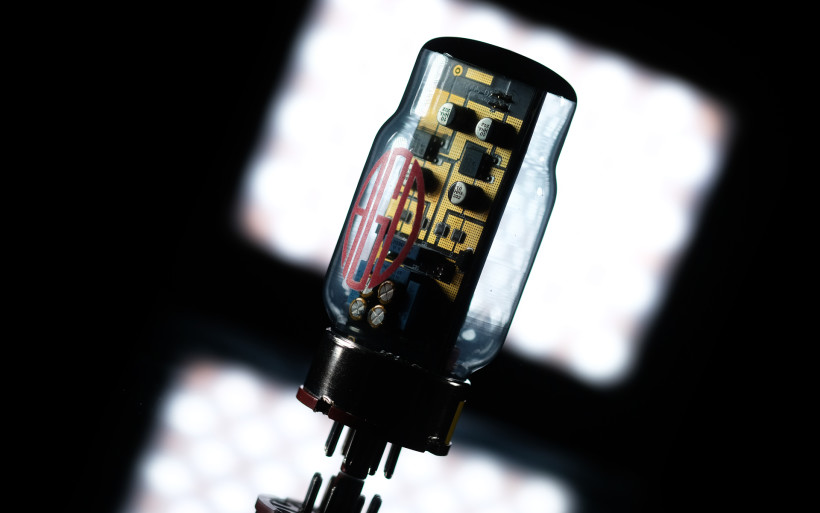 AMR DP-777SE is a very special machine. It houses two different DAC modules, but I was mainly interested in exploiting its four multi-bit UDA1305AT industrial relatives of TDA1543A by Philips, aka the Classic DAC option. Let’s add GE’s JAN 5670 tubes at the product’s outputs and volume control based on a digitally controlled resistor ladder inside of a chip. The DP-777SE sounds wonderfully liquid and organic enough to render many modern similar products as pale and uninviting. Set to work in the Bit-Perfect II mode with its jitter tracking engaged, the AMR showed its best side. It’s fair to mention that this machine neither is a resolution nor speed fiend. It was purposely voiced to showcase music from its fetching, involving, somewhat sweet, romantic and euphonic side. As such, this DAC is never angry or in-your-face direct, but rather pleasantly relaxed, sensual, soft and a bit distant. It focuses one’s attention towards finely texturized and gently outlined sound sources, albeit located mainly in-between both speakers. That’s in fact a part of its charm and the natural attractor for individuals into music served gracefully and intimately, rather than dissected and magnified. But most importantly, the DFP-777SE’s volume control follows suit to further boost its core features.
AMR DP-777SE is a very special machine. It houses two different DAC modules, but I was mainly interested in exploiting its four multi-bit UDA1305AT industrial relatives of TDA1543A by Philips, aka the Classic DAC option. Let’s add GE’s JAN 5670 tubes at the product’s outputs and volume control based on a digitally controlled resistor ladder inside of a chip. The DP-777SE sounds wonderfully liquid and organic enough to render many modern similar products as pale and uninviting. Set to work in the Bit-Perfect II mode with its jitter tracking engaged, the AMR showed its best side. It’s fair to mention that this machine neither is a resolution nor speed fiend. It was purposely voiced to showcase music from its fetching, involving, somewhat sweet, romantic and euphonic side. As such, this DAC is never angry or in-your-face direct, but rather pleasantly relaxed, sensual, soft and a bit distant. It focuses one’s attention towards finely texturized and gently outlined sound sources, albeit located mainly in-between both speakers. That’s in fact a part of its charm and the natural attractor for individuals into music served gracefully and intimately, rather than dissected and magnified. But most importantly, the DFP-777SE’s volume control follows suit to further boost its core features.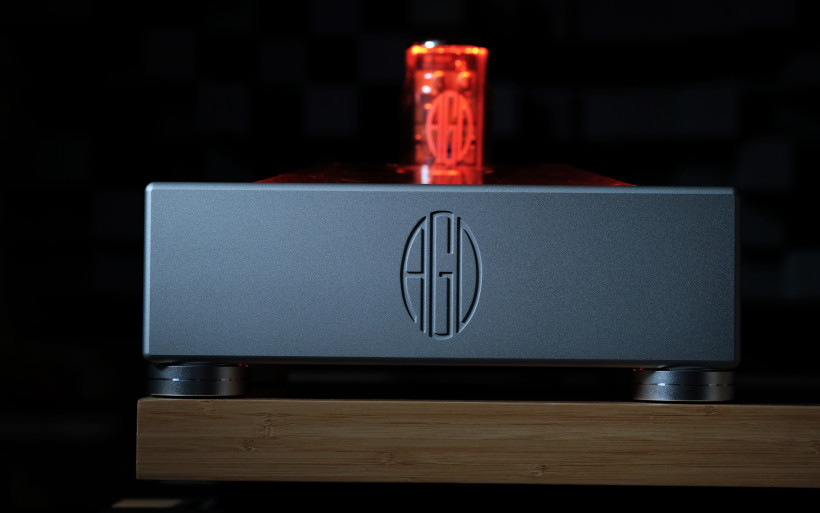 Alberto’s monos nearly instantly impressed with illumination, torque, openness, dynamic willingness, shove and lucid attitude in general, hence traits found at the opposite end of those the AMR emphasized. Once combined, these two approaches netted quite the result. Vivace’s sound greatly elevated insight and boosted on-stage air to finely highlight tiny dust particles suspended in virtual space, and net aural landscapes big and liberated from any veil. Still, what had me nailed to my seat was that particularly rare omnipresent smoothness and vividness. The Italian effect wasn’t coarse, dry, pale or chiseled, but lively beyond what its type of voicing usually delivers. Naturally sporty, light and direct attitude oftentimes is burdened with two signs of seasoning not fully flourished; outlines sculpted too roughly and nervousness. Calm minimalist music tends to uncover this, but Vivace sounded outstandingly liquid and thoroughly refined regardless. Although Alberto’s two-box team unequivocally introduced itself as insightful, speedy, effortless, airy and immediate, its complete freedom from harshness, dryness and twitchy upstairs spelled top tier maturity. Products naturally aspirated like so tend to be also light on bass, ethereal and somewhat hollow, but not today’s. Its jabs were as quick as they were full and grounded.
Alberto’s monos nearly instantly impressed with illumination, torque, openness, dynamic willingness, shove and lucid attitude in general, hence traits found at the opposite end of those the AMR emphasized. Once combined, these two approaches netted quite the result. Vivace’s sound greatly elevated insight and boosted on-stage air to finely highlight tiny dust particles suspended in virtual space, and net aural landscapes big and liberated from any veil. Still, what had me nailed to my seat was that particularly rare omnipresent smoothness and vividness. The Italian effect wasn’t coarse, dry, pale or chiseled, but lively beyond what its type of voicing usually delivers. Naturally sporty, light and direct attitude oftentimes is burdened with two signs of seasoning not fully flourished; outlines sculpted too roughly and nervousness. Calm minimalist music tends to uncover this, but Vivace sounded outstandingly liquid and thoroughly refined regardless. Although Alberto’s two-box team unequivocally introduced itself as insightful, speedy, effortless, airy and immediate, its complete freedom from harshness, dryness and twitchy upstairs spelled top tier maturity. Products naturally aspirated like so tend to be also light on bass, ethereal and somewhat hollow, but not today’s. Its jabs were as quick as they were full and grounded.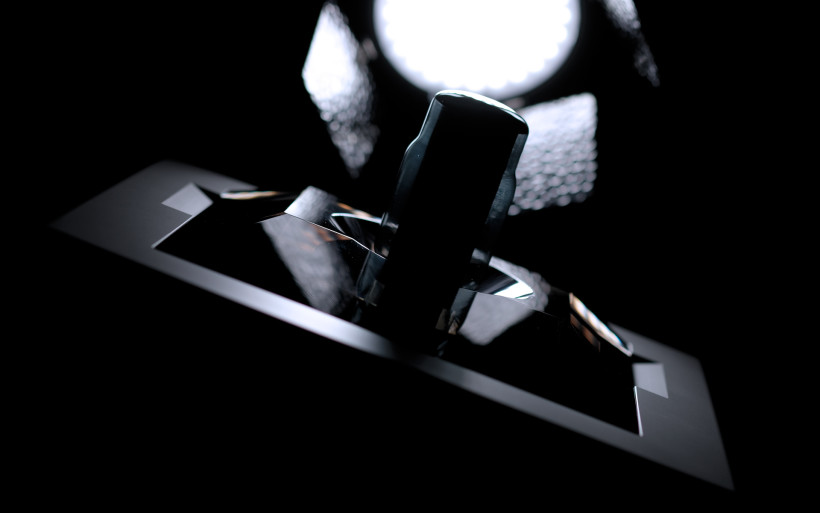 After a while today’s struck me as quite similar to the Bakoon AMP-13R. In fact, my biggest regret of this assignment was lack of speakers which would play as equally well with both these amps. Boenicke W11SE+ did well with the Bakoon only to an extent, so putting this petite integrated against Vivace wouldn’t be fair. Still, their alike quicksilvery, smooth, open and texturally complex and perfectly balanced voicing was factual. But above all else, Alberto’s monos clearly showcased what my AMR’s volume control did. The result was respectable beyond any doubt, but rather quickly I got the impression that AGD’s top shelf stuff could land images even grander, more propulsive and sensible. I wasn’t wrong, as it turned out Vivace driven from the DP-777SE’s XLR outs was a bit restrained indeed. Not only this, on some tracks I’d reached as high as -4dB of -71dB attenuation steps available. With two quite silent recordings on my playlist I actually managed to bypass the DAC’s volume completely. But when this happened, today’s became wilder.
After a while today’s struck me as quite similar to the Bakoon AMP-13R. In fact, my biggest regret of this assignment was lack of speakers which would play as equally well with both these amps. Boenicke W11SE+ did well with the Bakoon only to an extent, so putting this petite integrated against Vivace wouldn’t be fair. Still, their alike quicksilvery, smooth, open and texturally complex and perfectly balanced voicing was factual. But above all else, Alberto’s monos clearly showcased what my AMR’s volume control did. The result was respectable beyond any doubt, but rather quickly I got the impression that AGD’s top shelf stuff could land images even grander, more propulsive and sensible. I wasn’t wrong, as it turned out Vivace driven from the DP-777SE’s XLR outs was a bit restrained indeed. Not only this, on some tracks I’d reached as high as -4dB of -71dB attenuation steps available. With two quite silent recordings on my playlist I actually managed to bypass the DAC’s volume completely. But when this happened, today’s became wilder.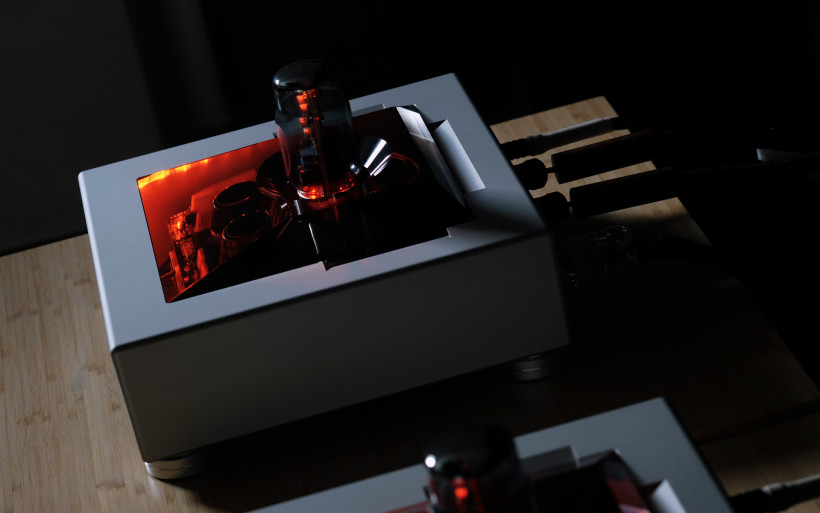 It all made sense. The AMR’s stepped regulation was already mapped as soft, distant and enchanting years ago. Once this circuit got bypassed, the DAC morphed into speedier, spatially more present, elastic, bigger and direct version of itself. Not by much in the grand scheme of things, but sensibly enough to notice and appreciate the difference Vivace rendered very easily. Knowing this, now was the time to follow up with the Thöress DFP in-between the Brit and Alberto’s monos. This line stage does pretty much everything truly well, but on two counts is quite remarkable. Its minimalist yet clever circuit is exceptionally agile and snappy, and it portrays big virtual sources up close and personal. These traits naturally delivered what the AMR’s volume plot didn’t have. Vivace gladly responded to this treatment with even more vigor, clarity and presence than before, but now the change was anything but small. What didn’t shift or decreased was its natural maturity. This report’s monos didn’t become fuzzier, coarser, grainier or icier, but remained as articulate, smooth, composed and alive as previously. Highly. Figuratively speaking, one gear shift up netted faster drive and higher RPM. If there was any downside in feeding Vivace with a single-ended signal, I failed to see it with nearby hardware.
It all made sense. The AMR’s stepped regulation was already mapped as soft, distant and enchanting years ago. Once this circuit got bypassed, the DAC morphed into speedier, spatially more present, elastic, bigger and direct version of itself. Not by much in the grand scheme of things, but sensibly enough to notice and appreciate the difference Vivace rendered very easily. Knowing this, now was the time to follow up with the Thöress DFP in-between the Brit and Alberto’s monos. This line stage does pretty much everything truly well, but on two counts is quite remarkable. Its minimalist yet clever circuit is exceptionally agile and snappy, and it portrays big virtual sources up close and personal. These traits naturally delivered what the AMR’s volume plot didn’t have. Vivace gladly responded to this treatment with even more vigor, clarity and presence than before, but now the change was anything but small. What didn’t shift or decreased was its natural maturity. This report’s monos didn’t become fuzzier, coarser, grainier or icier, but remained as articulate, smooth, composed and alive as previously. Highly. Figuratively speaking, one gear shift up netted faster drive and higher RPM. If there was any downside in feeding Vivace with a single-ended signal, I failed to see it with nearby hardware.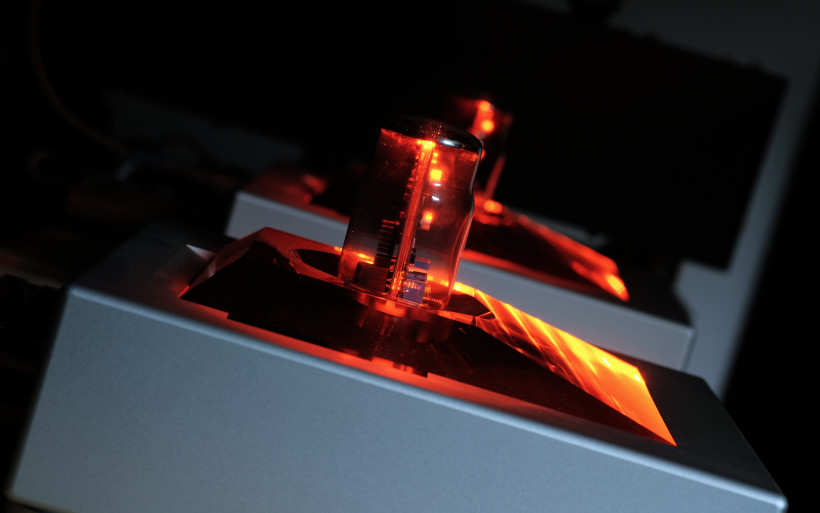 The excitement I got from Vivace fronted by the AMR and Reinhard’s line stage was as intense as it was satisfying. But most importantly, with quality repertoire I could push as loud as I pleased whilst remaining perfectly safe in the undistorted squeaky clean zone. Today’s inherent fluency just unlocked the option to go up and up on SPL without end anywhere close, whereas its sheer power left even tiniest hints of fatigue or struggle off the menu. Put shortly, AGD’s monos were as fierce as they were restless; tremendously easygoing and remarkably clear at the same time. Perhaps in a room twice as large and occupied by even more demanding speakers I would’ve reached the ceiling, but with what I had I didn’t.
The excitement I got from Vivace fronted by the AMR and Reinhard’s line stage was as intense as it was satisfying. But most importantly, with quality repertoire I could push as loud as I pleased whilst remaining perfectly safe in the undistorted squeaky clean zone. Today’s inherent fluency just unlocked the option to go up and up on SPL without end anywhere close, whereas its sheer power left even tiniest hints of fatigue or struggle off the menu. Put shortly, AGD’s monos were as fierce as they were restless; tremendously easygoing and remarkably clear at the same time. Perhaps in a room twice as large and occupied by even more demanding speakers I would’ve reached the ceiling, but with what I had I didn’t.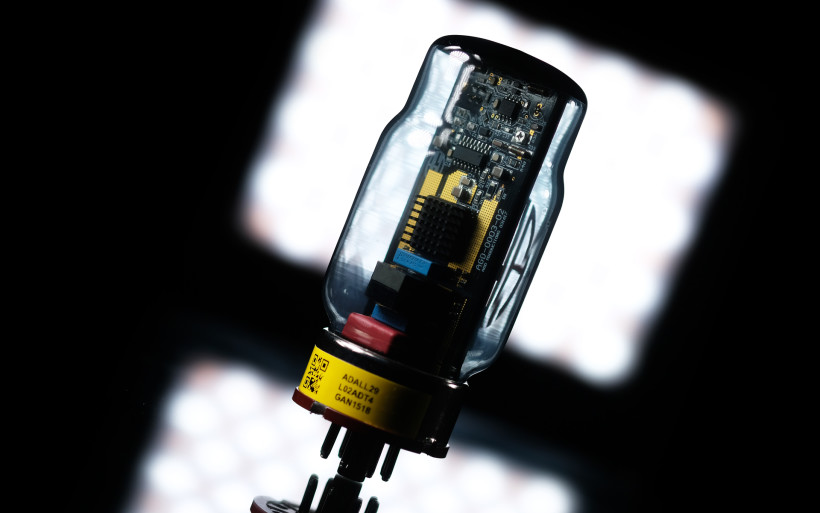 Once it became clear that the Thöress DFP had to stay, now was the time to swap a DAC, XLRs be damned. If the AMR followed the suave, picturesque and emotional route, the Pacific took a sharp detour towards the agile perfectly lit up hi-rez left lane. With my daily D/A engaged, today’s ride figuratively speaking underwent a major mechanical rework. It still was fit for public roads and cruising speeds, but with sportier gearbox, larger turbo and a different set of tires, who’d even bother. The setup was now ready for a race track. To speak the audiophile lingo, the Pacific instead of the Brit netted the outcome far faster, angrier, palpable, open, spatially present and visibly expanded in all directions. Now the result was fully blown yet as shimmery, sleek and seasoned as ever. Still, I’d finally heard what Vivace truly had in store for me.
Once it became clear that the Thöress DFP had to stay, now was the time to swap a DAC, XLRs be damned. If the AMR followed the suave, picturesque and emotional route, the Pacific took a sharp detour towards the agile perfectly lit up hi-rez left lane. With my daily D/A engaged, today’s ride figuratively speaking underwent a major mechanical rework. It still was fit for public roads and cruising speeds, but with sportier gearbox, larger turbo and a different set of tires, who’d even bother. The setup was now ready for a race track. To speak the audiophile lingo, the Pacific instead of the Brit netted the outcome far faster, angrier, palpable, open, spatially present and visibly expanded in all directions. Now the result was fully blown yet as shimmery, sleek and seasoned as ever. Still, I’d finally heard what Vivace truly had in store for me. The Pacific loaded with 300B valves made for Living Voice exclusively is persuasive, intimate, soothing and fabulously tactile with music based on subtle voices, string instruments and minimalism, which Vivace showcased as clearly as everything else. The rig based on my daily DAC, Alberto’s monos and the DFP was tremendously alive, sensual and gentle upon demand. It outlined all sound sources in front very meticulously and presented them internally moist, but also acted on the penciled light sporty side. To even things out a bit, the Scotts’ 300Bs were replaced by KR Audio’s T-100 DHTs. Now the effect was more grounded; gutsier, heftier on bass, bloomier and more relaxed. This swap complimented Vivace better yet didn’t truncate its dynamic potency, which struck the perfect balance to my ears. There was no fuzz, dilution, bloat or anything of the sort. Just a tad more gravity in exchange for lesser euphonic feel typical for 300B valves, was a fair price to pay. Still, each my setup’s component provided distinctive input and all worked in unison, whereas AGD’s monos explicitly expressed all this. Resolution of these compact beasts truly was off the charts.
The Pacific loaded with 300B valves made for Living Voice exclusively is persuasive, intimate, soothing and fabulously tactile with music based on subtle voices, string instruments and minimalism, which Vivace showcased as clearly as everything else. The rig based on my daily DAC, Alberto’s monos and the DFP was tremendously alive, sensual and gentle upon demand. It outlined all sound sources in front very meticulously and presented them internally moist, but also acted on the penciled light sporty side. To even things out a bit, the Scotts’ 300Bs were replaced by KR Audio’s T-100 DHTs. Now the effect was more grounded; gutsier, heftier on bass, bloomier and more relaxed. This swap complimented Vivace better yet didn’t truncate its dynamic potency, which struck the perfect balance to my ears. There was no fuzz, dilution, bloat or anything of the sort. Just a tad more gravity in exchange for lesser euphonic feel typical for 300B valves, was a fair price to pay. Still, each my setup’s component provided distinctive input and all worked in unison, whereas AGD’s monos explicitly expressed all this. Resolution of these compact beasts truly was off the charts.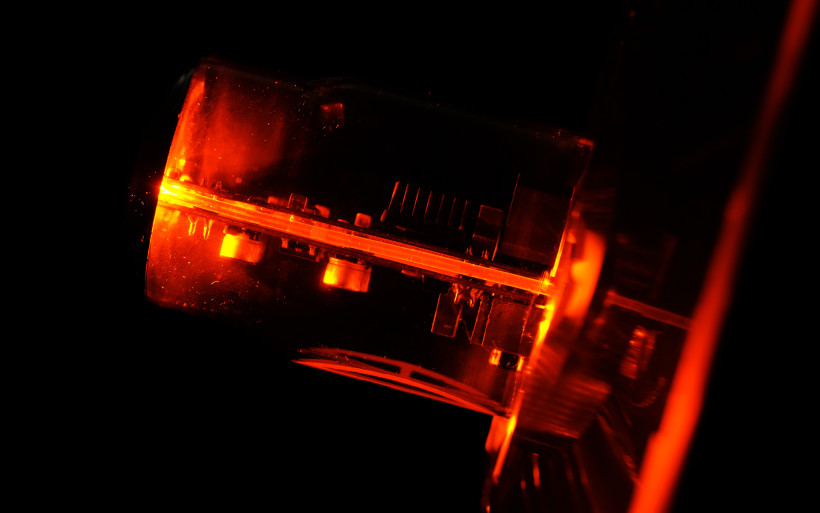 Once the dream team for this report’s product was assembled, it was high time to put it against my crib’s daily amps. What followed wasn’t exactly a slaughter, but Vivace fronted by the DFP made quick work of the EX-M1 and 925. The Kinki versus today’s sounded somewhat thicker, a bit slower, less insightful, shiny and smooth, plus it was more mechanical in top FR and had its upper bass a bit boosted to score lower notes on overall clarity and pronunciation. It’s fair to label the Chinese as quite juvenile in comparison, definitely nowhere near as refined. The EX-M1 somewhat made up its lack of sophistication with stout horsepower to drive my speakers as good as per usual, but was easily bested nonetheless. Still, I’ve been thoroughly enjoying the heck out of this integrated ever since its arrival and nothing has changed on this count.
Once the dream team for this report’s product was assembled, it was high time to put it against my crib’s daily amps. What followed wasn’t exactly a slaughter, but Vivace fronted by the DFP made quick work of the EX-M1 and 925. The Kinki versus today’s sounded somewhat thicker, a bit slower, less insightful, shiny and smooth, plus it was more mechanical in top FR and had its upper bass a bit boosted to score lower notes on overall clarity and pronunciation. It’s fair to label the Chinese as quite juvenile in comparison, definitely nowhere near as refined. The EX-M1 somewhat made up its lack of sophistication with stout horsepower to drive my speakers as good as per usual, but was easily bested nonetheless. Still, I’ve been thoroughly enjoying the heck out of this integrated ever since its arrival and nothing has changed on this count. Vivace plus DFP versus my 925 was a more interesting match. The former team clearly was speedier, more open, effortless, sunnier, articulate, tonally more even and texturally less juicy in favour of greater complexion. Trilogy’s hardware on the other hand played it warmer, dimmer, beefier, calmer, stuffier, more voluptuous and larger on virtual sculptures’ frames. Vivace’s major edge on technicalities and lack of any restraints, especially acceleration and dynamic might, would frame these monos as a top tier OB case, whereas the 925 would be a regular ported affair, albeit on the slower side to synergize with speedy companions. Still, the variety is the spice of life. Many enthusiasts would buy into the latter’s voicing because of all its meaty features I just listed. This integrated deck is a fabulous match for speakers lean, ethereal, light on bass and anemic on textural tissue, hence a highly situational product. Vivace on the other hand is far more universal, but not geared towards covering or replacing severe colourations. Its revelatory prowess is in fact one of its greatest strengths.
Vivace plus DFP versus my 925 was a more interesting match. The former team clearly was speedier, more open, effortless, sunnier, articulate, tonally more even and texturally less juicy in favour of greater complexion. Trilogy’s hardware on the other hand played it warmer, dimmer, beefier, calmer, stuffier, more voluptuous and larger on virtual sculptures’ frames. Vivace’s major edge on technicalities and lack of any restraints, especially acceleration and dynamic might, would frame these monos as a top tier OB case, whereas the 925 would be a regular ported affair, albeit on the slower side to synergize with speedy companions. Still, the variety is the spice of life. Many enthusiasts would buy into the latter’s voicing because of all its meaty features I just listed. This integrated deck is a fabulous match for speakers lean, ethereal, light on bass and anemic on textural tissue, hence a highly situational product. Vivace on the other hand is far more universal, but not geared towards covering or replacing severe colourations. Its revelatory prowess is in fact one of its greatest strengths.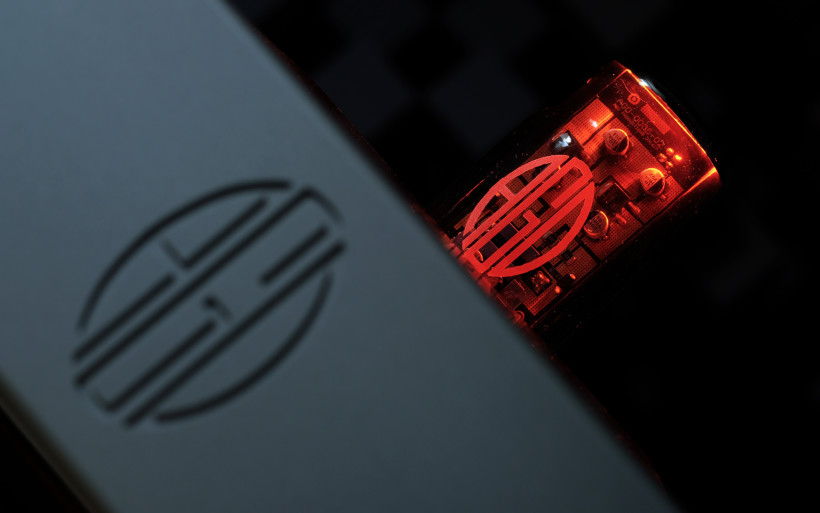 After all fights Vivace had, finally it was time to kick back, relax and have a casual listen, or at least try to. One of the very best things about these monos was their engaging and exciting input. I couldn’t simply flip a switch and disconnect from their highly resolving and entertaining attitude. Rare products capable of having me at the edge of my seat all the time, and for just the right reasons, are the ones I consider as overachievers. This report’s jewel clearly belongs to this prestigious club. Its performance is outstanding enough to easily outclass many pricier class AB competitors, this I’m sure of.
After all fights Vivace had, finally it was time to kick back, relax and have a casual listen, or at least try to. One of the very best things about these monos was their engaging and exciting input. I couldn’t simply flip a switch and disconnect from their highly resolving and entertaining attitude. Rare products capable of having me at the edge of my seat all the time, and for just the right reasons, are the ones I consider as overachievers. This report’s jewel clearly belongs to this prestigious club. Its performance is outstanding enough to easily outclass many pricier class AB competitors, this I’m sure of.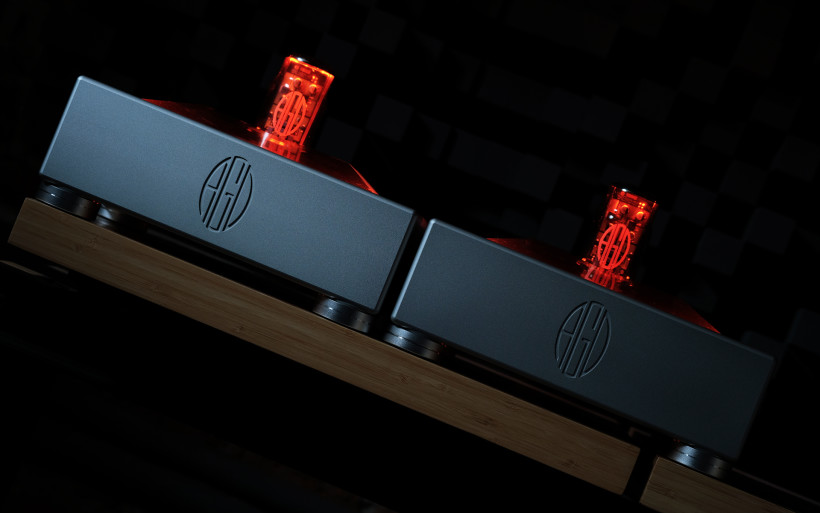 I can’t remember when exactly I stopped thinking about Alberto’s topology of choice, but this departure happened very quickly. What I’d thought about however was the S.P.E.C. RSA-M99 reviewed several months earlier here. Voiced to mimic SET valves, this Japanese integrated sounded nothing like Vivace. In fact, based on my memory I’d position both these machines at opposite ends of the same spectrum. Affiliation with roughly the same circuit family is the only thing they have in common, not even specific measures. But the key thing to take note of in this context is potency of class D today; how much performance out of it can be squeezed, how different its execution can be and how varied sonics might follow. Several successful adventures with this breed resulted in its flavours so broad, that to me it simply doesn’t have a distinctively uniform pattern, not any longer. Alberto’s work reassured me with these observations for good.
I can’t remember when exactly I stopped thinking about Alberto’s topology of choice, but this departure happened very quickly. What I’d thought about however was the S.P.E.C. RSA-M99 reviewed several months earlier here. Voiced to mimic SET valves, this Japanese integrated sounded nothing like Vivace. In fact, based on my memory I’d position both these machines at opposite ends of the same spectrum. Affiliation with roughly the same circuit family is the only thing they have in common, not even specific measures. But the key thing to take note of in this context is potency of class D today; how much performance out of it can be squeezed, how different its execution can be and how varied sonics might follow. Several successful adventures with this breed resulted in its flavours so broad, that to me it simply doesn’t have a distinctively uniform pattern, not any longer. Alberto’s work reassured me with these observations for good.
Summary
Although class D even today is considered as not fit for audiophile duties, amassed experience tells me that it blossomed enough to easily render its infamy as seriously outdated. To me the S.P.E.C. RSA-M99 already liberated this topology from its stigma, whereas AGD Productions Vivace followed suit even more firmly just now. Although both these specimens easily stomp stereotypes and score silly high on performance, the latter impressed me significantly more.
AGD Productions Vivace at first glance might strike you as downright quirky. Since nothing like it exists in the industry, such introductory reaction seems fitting. But upon closer inspection it’s crystal clear that today’s is as clever as it’s well thought out. Its small footprint, nicely illuminated acrylic top, fine assembly, dead silence, stunning look, plenty of power on tap and pleasantly cool operation, all contribute to the outstanding effect, but Alberto Guerra’s unique GaN power stage dressed in easily swappable glass was a truly brilliant move. Once he pushes this technology further, a new set of AGD valves instead of a new machine is all there is to it. If that’s not future-proofing and forward-thinking at their finest, then I haven’t the faintest what is.
AGD Productions Vivace positioned itself somewhere in the ballpark of the Bakoon AMP-13R on maturity, sophistication and overall fresh voicing. Of course unless the latter flourishes into a times more powerful version of itself, I can’t possibly know which one of the two would take the cake. But this guesswork aside, the Vivace emerged as one of the finest amplifiers I’m aware of, and undoubtedly the very best class D case I’ve heard to date, hence the ‘Victor’ award below. This badge also expresses my admiration towards Alberto Guerra’s engineering skills and his way of merging visual hotness with petite sizing, top shelf sonics, modular design and practicality. Without such products there would be no progress. Chapeau bas and ‘til next time!
Associated Equipment:
- Amplifier: Trilogy 925, Kinki Studio EX-M1
- DAC: LampizatOr Pacific (KR Audio T-100 / Living Voice 300B + KR Audio 5U4G Ltd. Ed.)
- Speakers: Boenicke Audio W11 SE+
- Transport: fidata HFAS1-S10U
- Line stage: Thöress DFP
- Speaker cables: Boenicke Audio S3, LessLoss C-MARC
- Interconnects: Boenicke Audio IC3 CG
- Power components: Gigawatt PC-3 SE EVO+, Gigawatt PF-2 + Gigawatt LC-2 MK2 + Audiomica Laboratory Ness Excellence/LessLoss C-MARC
- Rack: Franc Audio Accesories Wood Block Rack
- Music: NativeDSD, Roon
Retail prices of reviewed components in EU (excl. tax):
- AGD Productions Vivace: $15’000/pr
Manufacturer: AGD Productions


